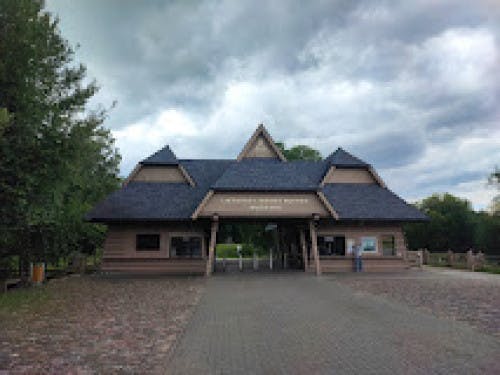There have been attempts to establish a central open-air museum in Lithuania since the beginning of the 20th century, but these attempts have not been successful for various reasons. The Lithuanian Museum of Ethnography was established quite late - in 1966 in Rumšiškės, on the land of Pieveļi village. It was opened to visitors in 1974.
A scientific council was formed to develop the structure of the museum, to assemble the exhibits, to establish the scientific methodological direction of the work, and to set out the basic guidelines for the layout and construction of the building. It could be said that the whole of Lithuania was involved in the creation of the museum. It is the people who designed, built, searched for exhibits, researched, and those who donated, sold or told about the objects, customs and everyday life of the ancients, as well as those who assisted, performed, and participated in festivals.
The Lithuanian Museum of Ethnography is one of the largest open air museums in Europe in terms of the area (195 ha) and the number of real exhibits. It is the only ethnographic museum in Lithuania presenting a reduced reflection of all ethnographic regions and towns of Lithuania. A separate sector is dedicated to the memory of the exile and resistance of the Lithuanian population: a yurt (a small house), an exile wagon, a partisan shelter (a bunker), and monuments. Visitors are greeted by an educator, a former exile, whose powerful narration makes it possible to feel the tragedy of the exiled people as if in real life. The unique Aristavėlė Manor House is a valuable example of Baroque wooden architecture. The Lithuanian Ethnographic Museum is unique in the European context for its demonstration of land cultivation systems and the development of settlements.
The chronological framework of the museum's exposition covers the late 18th and mid-20th centuries. It is organised in ethnographic regions, with the terrain features that characterise them. The main real estate units of the exposition are farmsteads or fragments of farmsteads of varying wealth. The interior expositions record exceptional events in the life of the community, such as the production of High Styrian beer in the Daujėnai homestead, the setting of the hen party and the preparation for the wedding feast in the Gyvakarai homestead, and the commemoration of the dead in the Musteika homestead - the 'Dziedai' (Songs of the dead). In the interwar town you can visit the Church of the Nativity of the Blessed Virgin Mary, visit the educational expositions of the interwar elementary school, the Jew's flat, the ironworks, the manufactory, the state-owned distillery shops, etc. The museum also has a tactile exposition for the blind and visually impaired.
Some of the museum's expositions are live, working exhibitions, where the visitor can learn, touch, taste or even smell something. The unaltered landscape, the variety of animals and plants are a great place for learning, creativity and relaxation for both young and old. Everyone who comes to the museum can find their homeland - the home of their parents, grandparents or great-grandparents.
The Lithuanian Museum of Ethnography is one of the most important cultural tourism attractions in Lithuania. It is a major cultural, educational and scientific institution. The museum offers over 30 educational activities for visitors of all ages and families. Most of them take place in the natural environment of the farmhouses, presenting also the buildings, where the educational material and content are revealed in a different way. The Museum's calendar of events is based on the traditional festivals dedicated to the customs of the annual cycle. The most popular are Užgavėnės, Easter and Žolinė. The Museum also organises exhibitions, conferences and publishes publications. Visitors can spend their leisure time according to their interests: take part in quizzes, competitions, games, festivals and contests.
The museum's interior expositions are open from May to 1 October. Since its foundation, more than 3 million people have visited the museum. The most distinguished foreign guests have included King Carl XVI Gustaf and Queen Silvia of Sweden, King Harald V and Queen Sonja of Norway, President Olafur Ragnar Grimsson and his wife of Iceland, President Lennart Meris of Estonia, NATO parliamentarians, and the European Association of Open Air Museums conference. The museum now receives over 100,000 visitors a year.
